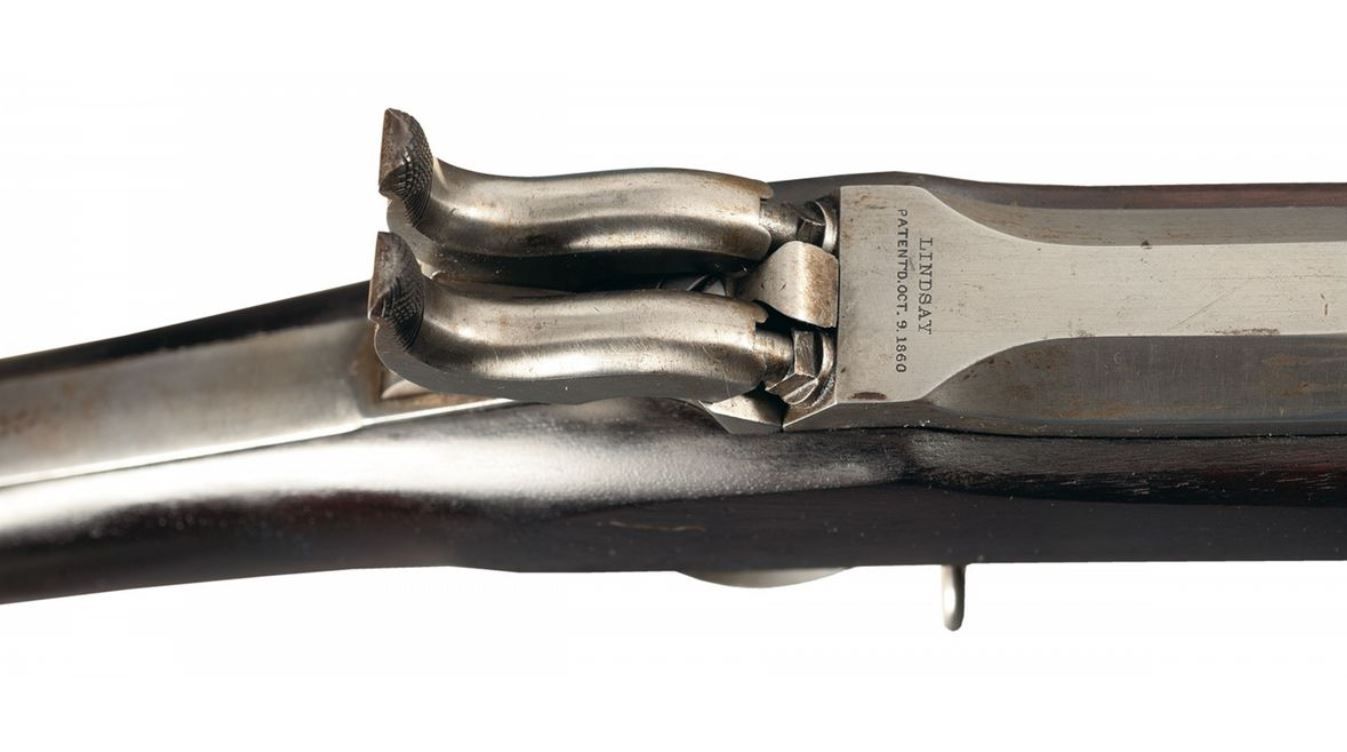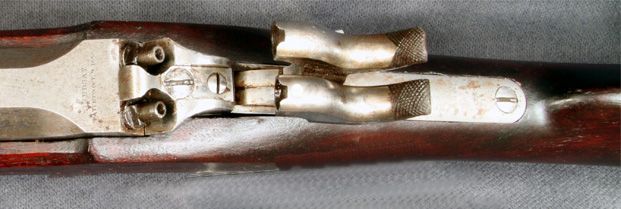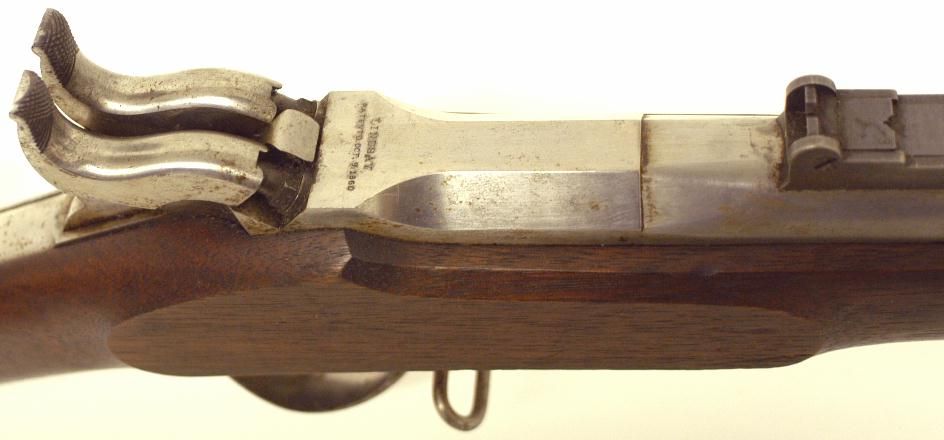On December 17, 1863 John Lindsay, one time employee at Springfield Armory, was granted a contract to produce 1,000 double rifle-muskets at $25 each. It was a clever idea but not so new. Double barreled pistols, rifles, and shotguns had been around for centuries. Lindsay had received a patent in October 1860 for the idea to eliminate the bulk and weight of two side-by-side barrels by utilizing one barrel that was breeched with two flash channels and two percussion cones. With two hammers, a pull of the single trigger dropped the right side hammer which ignited the forward most of two charges loaded one on top of the other. A second pull of the trigger dropped the left side hammer, firing the bottom most charge. The lower bullet was to serve as the gas check or seal from the upper charge getting to the lower charge's powder.
Two shots for one loading. Twice the fire power.
While clever, and well made, the pistol was a failure. When fired, the fouling from the lower charge quickly fouled closed the long flash channel leading to the forward closed rendering the pistol useless. The government was not impressed, and Lindsay was unable to secure a contract for his large pistol.. Less than 100 were known to have been made. A few hundred pocket and belt versions were made.
At a time when the new M1864 (M1863 Type II) was taking off, Lindsay somehow managed to sell the idea anew to the Ordnance Department in rifle-musket form whom seemed apparently not to trial or test the design.
Lindsay basically took a M1863 RM, and replaced the lock and breech system with a musket sized version of his double pistol.. After some start up delays, Lindsay was able to deliver his 1,000 on August 12, 1864.
Remarkably, they were inspected and accepted for use.
As a whole, the lot went to the 16th Michigan Infantry replacing their M1861 RM's. The 16th Michigan took them into action at the Battle of Peeble's Farm, (Poplar Springs Church) outside of Petersburg September 30 through October 2, 1864.
Reports showed them unreliable and dangerous, the failing being that the undersized Minie ball of the first or lower charge did not seal the bore and flash passed it igniting the first. That made the second charge an obstruction, which burst the breech and lower barrel.








